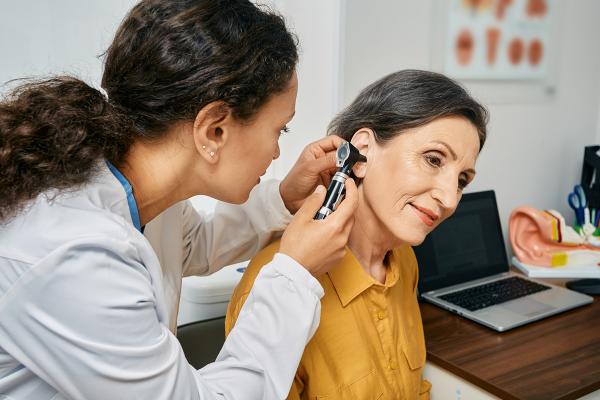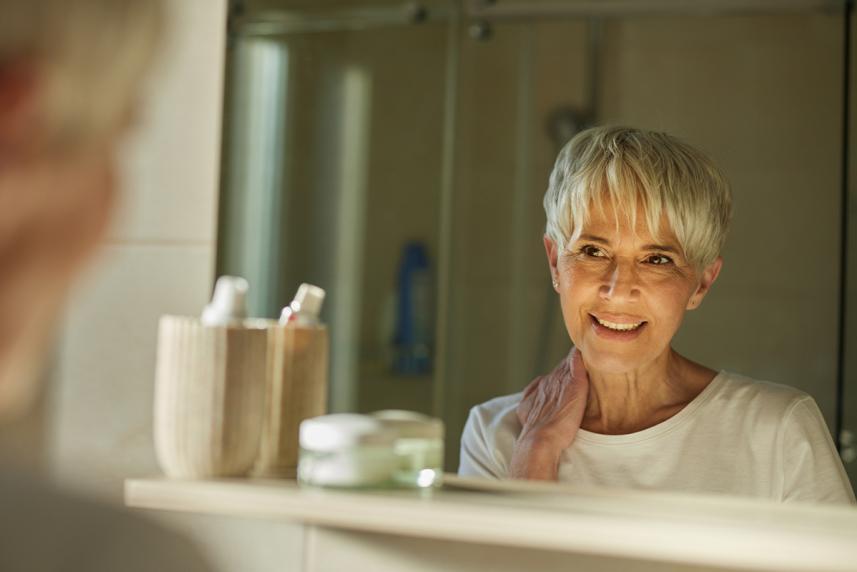
EPIC Hearing Healthcare helps members access hearing exams, hearing aids and more. Sign in to learn more and check eligibility.
Having some earwax is healthy, but too much of it might affect your hearing. Find out the facts, plus how to clean your ears safely.

Earwax is key for keeping your ears healthy. Seriously. The cells in your ear canal make earwax.1 Among its many jobs, earwax moisturizes your ear canal skin. It also traps dirt and protects your ear canal and eardrum from bacteria.2
Normally, earwax clears out on its own. It works its way out from the inner ear to the outer ear, where it falls out or is washed away when you take a shower or wash your hair. In fact, you don’t have to do anything special. Just dry your outer ears well.1
The problem is when earwax builds up. This is called an earwax blockage, and it can happen for many reasons.3 “Some patients will get more wax as they get older,” says Michael Thomas. He’s a hearing care professional at Beltone Hearing Aid Center in Beaufort, South Carolina. People who wear hearing aids are also at higher risk of an earwax blockage.4 “It’s usually right behind the hearing aid,” says Thomas.
Wearing earbuds or earplugs or cleaning your ears with cotton swabs can also cause blockage. So can previous ear surgery or trauma.5 That’s why it’s good to learn how earwax affects your hearing and how to clean out the excess the safest way.

EPIC Hearing Healthcare helps members access hearing exams, hearing aids and more. Sign in to learn more and check eligibility.
Too much wax may lead to temporary hearing loss. “When we have an ear canal impacted with wax, our lower frequencies are blocked,” says Thomas. “To us, it seems like the volume is lower.”
You also might also experience tinnitus (ringing in the ears).4 Or things might just sound muffled.
You might also have other symptoms. Those include a feeling of fullness or stuffiness in your ear. Your ear may be itchy. Or even painful, as too much earwax can cause infections.
Notice any of these symptoms? It’s a good idea to have an expert check your ears for wax. You can see your primary care provider (PCP); an audiologist; or an ear, nose and throat specialist (ENT). All these types of providers can remove earwax.2
First, they will look inside your ear with a tool that shines light into the ear canal.3 They’ll be able to see right away if too much earwax is what’s behind your hearing loss, or if it’s something else. For example, an ear infection could be causing your muffled hearing. And you’d need your PCP or ENT to diagnose and treat that.5
The PCP, ENT or hearing care professional may ask questions about your symptoms. They might also ask if you’ve had drainage, pain or hearing loss. You should tell your provider if your symptoms are always there or if they come and go.
Providers can remove excess earwax in several ways:2,3
Even if you don’t have symptoms, ask your PCP to check your ears during a visit or your yearly checkup. Checking your ears for wax often gets overlooked, adds Thomas.
It’s best to ask your PCP when you have questions about removing earwax. They can give you the best advice on how to clean your ears at home. They will probably recommend a plan that includes these tips:
Concentrate on your outer ear: “Earwax and dried skin can collect in the little crevices on the outer ear,” says Thomas. So, keep that area clean by using a washcloth in the shower or bath to wipe out the outer ear. Afterward, towel dry gently.
Use softening drops: You can buy these drops over the counter (OTC). Look for ones that contain carbamide peroxide, as peroxide is good for breaking up wax.4 To put them in your ear:5
You don’t have to buy OTC drops. You can also use:2,3
Just don’t use hydrogen peroxide if you’ve had ear surgery or get a lot of ear infections. The peroxide could cause harm and pain in those cases.1
Flush it out with a bulb syringe: Bulb syringes are also available over the counter. To flush your ear out safely:5
Never use cotton swabs: Don’t put anything inside your ear canal to try to remove wax. This includes cotton swabs, as well as hairpins and paperclips, says the Mayo Clinic.3 Trying to dig it out yourself may push it deeper into your ear canal. You risk damaging your ear canal or eardrum.
Once you clean out the earwax, you’ll be able to tell whether your ears were clogged or you really don’t hear well.
If that’s the case, consider checking your hearing online. While it may not give you official results, an online hearing test may help you decide whether to get a comprehensive exam from a hearing care professional. They can diagnose what’s going on and whether you could benefit from hearing aids.
Did you know that many hearing benefits, including a hearing exam and consultation, are covered through EPIC Hearing Healthcare? Learn more.
Sources
Information is for educational purposes only and is not a substitute for the advice of a licensed medical provider. Consult your provider prior to making changes to your lifestyle or health care routine.
The online hearing test is not intended to act as a substitute for professional medical advice, diagnosis, or treatment. Talk with your healthcare provider with any question about a medical condition.